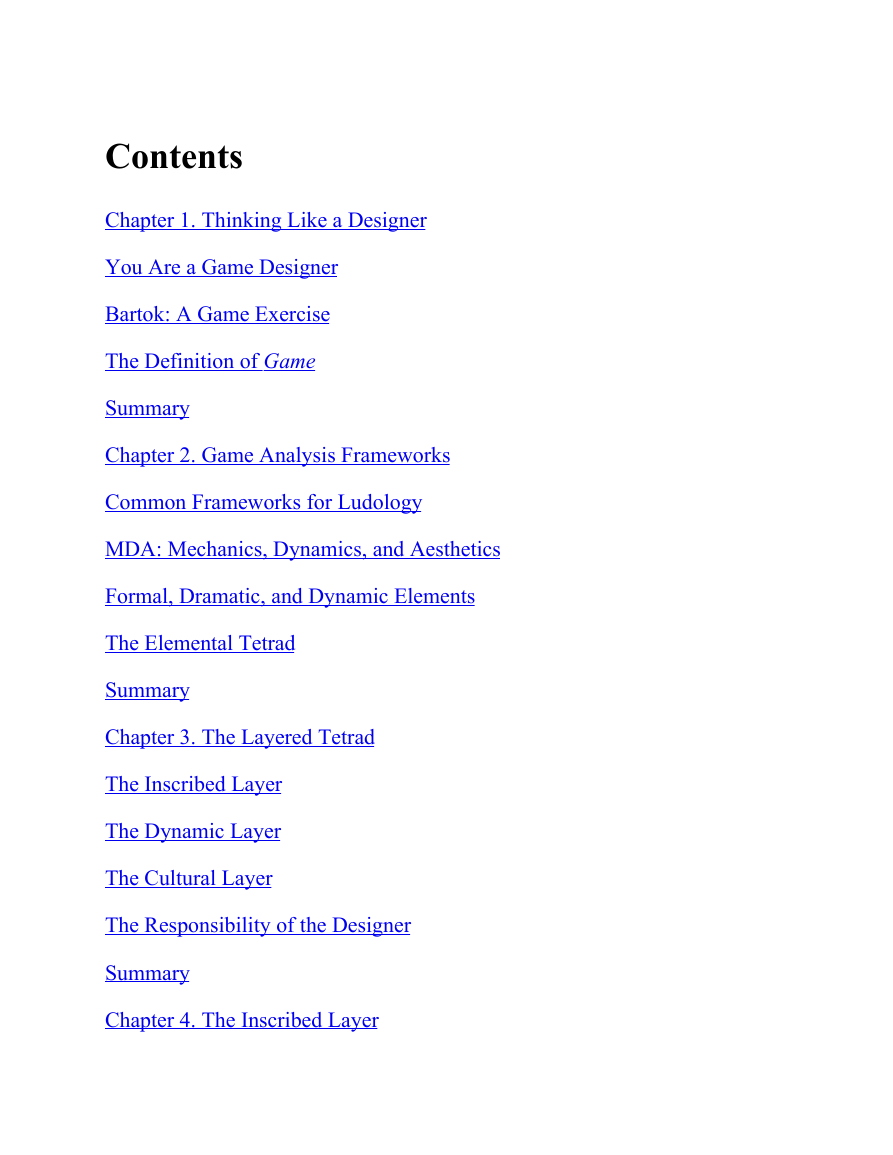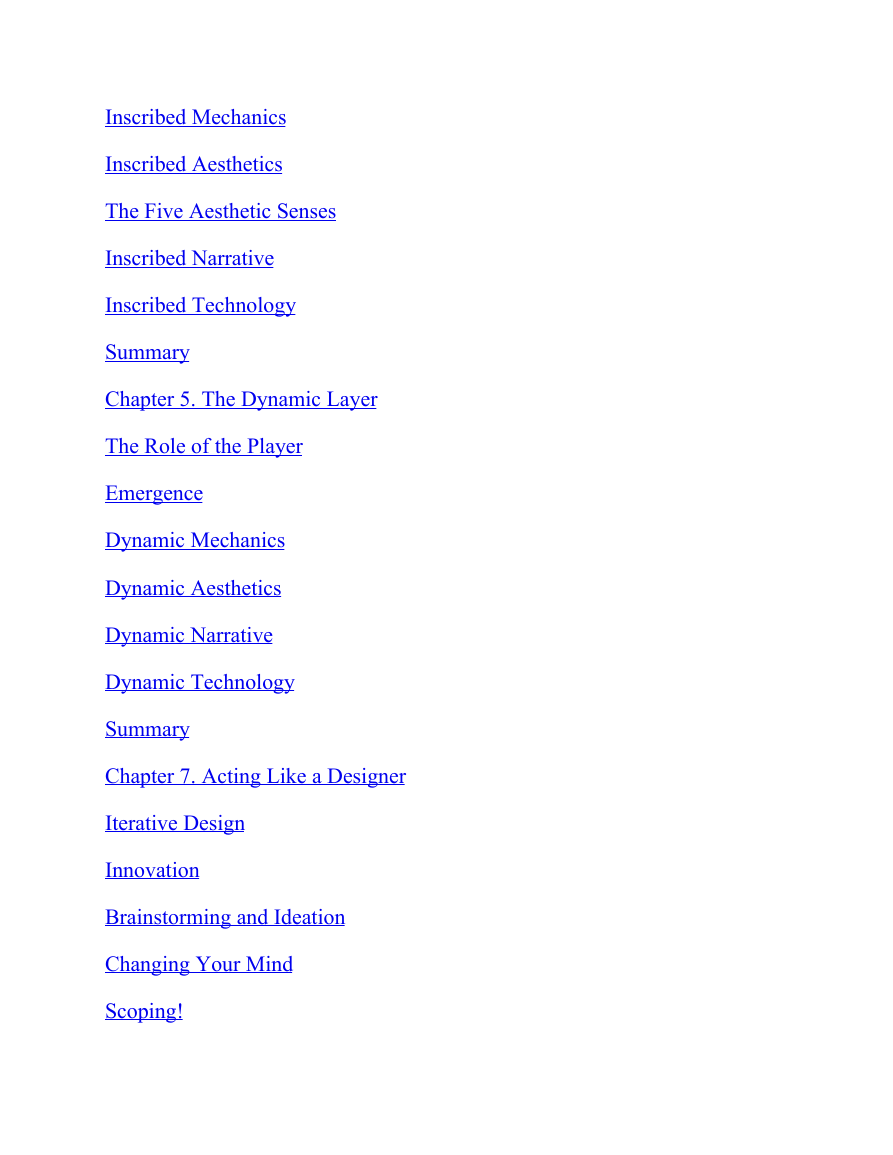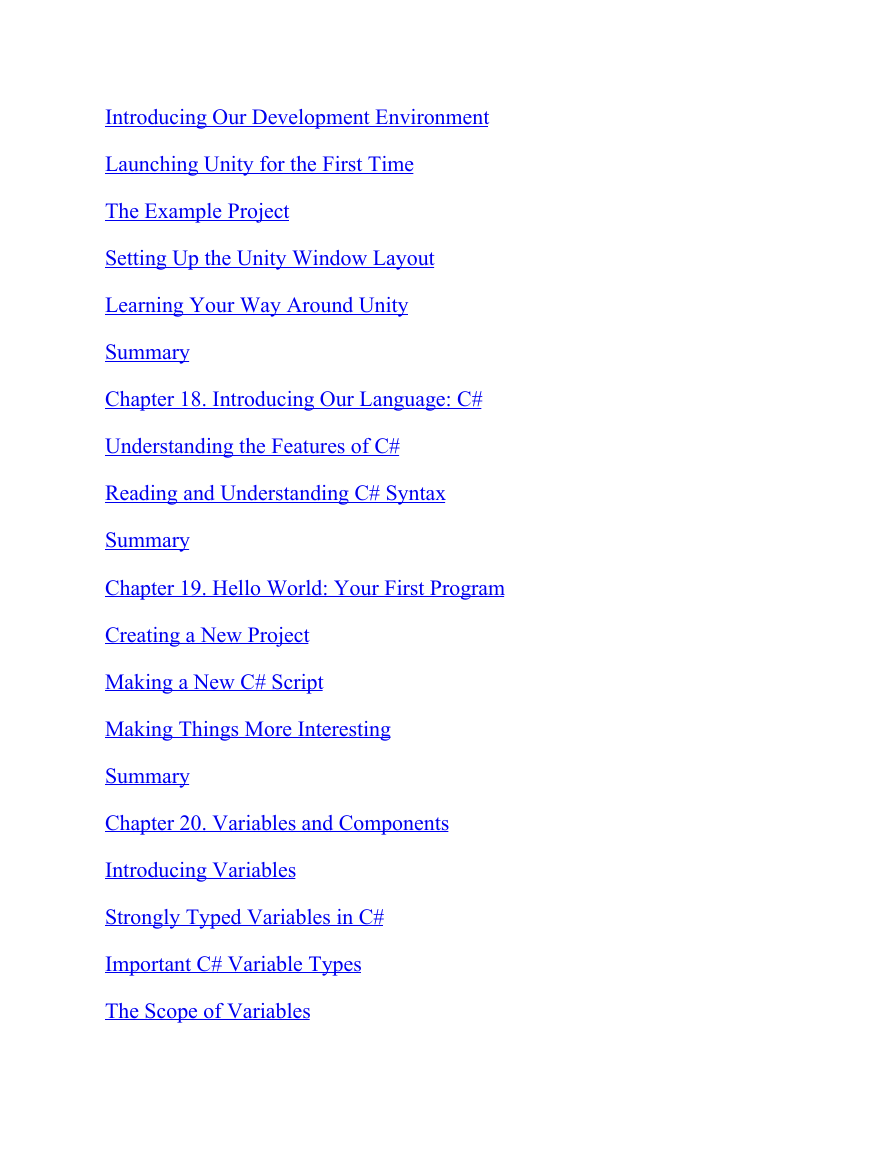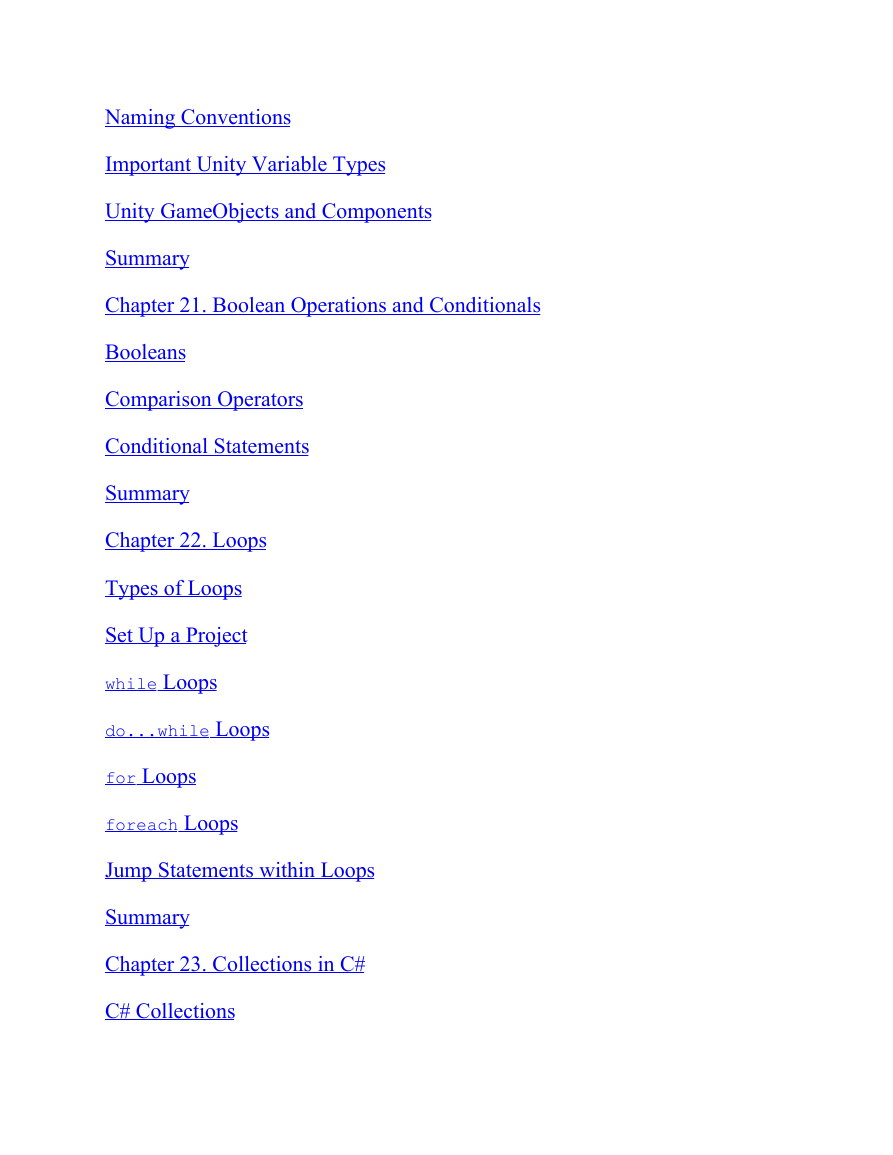�
Contents
Chapter 1. Thinking Like a Designer
You Are a Game Designer
Bartok: A Game Exercise
The Definition of Game
Summary
Chapter 2. Game Analysis Frameworks
Common Frameworks for Ludology
MDA: Mechanics, Dynamics, and Aesthetics
Formal, Dramatic, and Dynamic Elements
The Elemental Tetrad
Summary
Chapter 3. The Layered Tetrad
The Inscribed Layer
The Dynamic Layer
The Cultural Layer
The Responsibility of the Designer
Summary
Chapter 4. The Inscribed Layer
Inscribed Mechanics
Inscribed Aesthetics
The Five Aesthetic Senses
Inscribed Narrative
Inscribed Technology
Summary
Chapter 5. The Dynamic Layer
The Role of the Player
Emergence
Dynamic Mechanics
Dynamic Aesthetics
Dynamic Narrative
Dynamic Technology
Summary
Chapter 7. Acting Like a Designer
Iterative Design
Innovation
Brainstorming and Ideation
Changing Your Mind
Scoping!
�
Summary
Chapter 8. Design Goals
Design Goals: An Incomplete List
Designer-Centric Goals
Player-Centric Goals
Summary
Chapter 10. Game Testing
Why Playtest?
Being a Great Playtester Yourself
The Circles of Playtesters
Methods of Playtesting
Other Important Types of Testing
Summary
Chapter 11. Math and Game Balance
The Meaning of Game Balance
The Importance of Spreadsheets
Examining Dice Probability with Sheets
The Math of Probability
Randomizer Technologies in Paper Games
Weighted Distributions
�
Permutations
Using Sheets to Balance Weapons
Positive and Negative Feedback
Summary
Chapter 12. Guiding the Player
Direct Guidance
Indirect Guidance
Teaching New Skills and Concepts
Summary
Chapter 13. Puzzle Design
Scott Kim on Puzzle Design
Puzzle Examples in Action Games
Summary
Chapter 16. Thinking in Digital Systems
Systems Thinking in Board Games
An Exercise in Simple Instructions
Game Analysis: Apple Picker
Summary
Chapter 17. Introducing The Unity devELOPMENT environment
Downloading Unity
�
Introducing Our Development Environment
Launching Unity for the First Time
The Example Project
Setting Up the Unity Window Layout
Learning Your Way Around Unity
Summary
Chapter 18. Introducing Our Language: C#
Understanding the Features of C#
Reading and Understanding C# Syntax
Summary
Chapter 19. Hello World: Your First Program
Creating a New Project
Making a New C# Script
Making Things More Interesting
Summary
Chapter 20. Variables and Components
Introducing Variables
Strongly Typed Variables in C#
Important C# Variable Types
The Scope of Variables
�
Naming Conventions
Important Unity Variable Types
Unity GameObjects and Components
Summary
Chapter 21. Boolean Operations and Conditionals
Booleans
Comparison Operators
Conditional Statements
Summary
Chapter 22. Loops
Types of Loops
Set Up a Project
while Loops
do...while Loops
for Loops
foreach Loops
Jump Statements within Loops
Summary
Chapter 23. Collections in C#
C# Collections
�
Using Generic Collections
List
Dictionary
Array
Multidimensional Arrays
Jagged Arrays
Whether to Use Array or List
Summary
Chapter 24. Functions and parameters
Set Up the Function Examples Project
Definition of a Function
Function Parameters and Arguments
Returning Values
Proper Function Names
Why Use Functions?
Function Overloading
Optional Parameters
The params Keyword
Recursive Functions
Summary
�
















 2023年江西萍乡中考道德与法治真题及答案.doc
2023年江西萍乡中考道德与法治真题及答案.doc 2012年重庆南川中考生物真题及答案.doc
2012年重庆南川中考生物真题及答案.doc 2013年江西师范大学地理学综合及文艺理论基础考研真题.doc
2013年江西师范大学地理学综合及文艺理论基础考研真题.doc 2020年四川甘孜小升初语文真题及答案I卷.doc
2020年四川甘孜小升初语文真题及答案I卷.doc 2020年注册岩土工程师专业基础考试真题及答案.doc
2020年注册岩土工程师专业基础考试真题及答案.doc 2023-2024学年福建省厦门市九年级上学期数学月考试题及答案.doc
2023-2024学年福建省厦门市九年级上学期数学月考试题及答案.doc 2021-2022学年辽宁省沈阳市大东区九年级上学期语文期末试题及答案.doc
2021-2022学年辽宁省沈阳市大东区九年级上学期语文期末试题及答案.doc 2022-2023学年北京东城区初三第一学期物理期末试卷及答案.doc
2022-2023学年北京东城区初三第一学期物理期末试卷及答案.doc 2018上半年江西教师资格初中地理学科知识与教学能力真题及答案.doc
2018上半年江西教师资格初中地理学科知识与教学能力真题及答案.doc 2012年河北国家公务员申论考试真题及答案-省级.doc
2012年河北国家公务员申论考试真题及答案-省级.doc 2020-2021学年江苏省扬州市江都区邵樊片九年级上学期数学第一次质量检测试题及答案.doc
2020-2021学年江苏省扬州市江都区邵樊片九年级上学期数学第一次质量检测试题及答案.doc 2022下半年黑龙江教师资格证中学综合素质真题及答案.doc
2022下半年黑龙江教师资格证中学综合素质真题及答案.doc